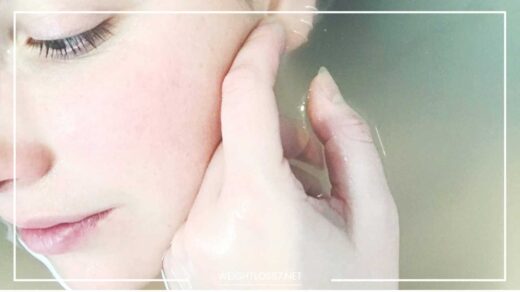Shine Bright: Your Complete Guide to Clean & White Teeth

Clean & White Teeth
Clean and White Teeth: A Comprehensive Guide to a Sparkling Smile
A dazzling smile isn’t just about aesthetics; it’s a window to your overall health and well-being. It fosters confidence, makes a positive first impression, and can even influence professional and social interactions.
But achieving a truly radiant smile requires dedication to oral hygiene and strategic whitening techniques.
This comprehensive guide delves into the science behind teeth, the culprits causing stains, and the best practices to cultivate a healthy, white smile.
Understanding the Science of Teeth: Enamel and Stains
Before embarking on your whitening journey, let’s explore the fundamental structure of teeth and how stains develop.
Our teeth are composed of several layers, with the outermost layer being the enamel. This hard, white layer acts as a shield, protecting the inner layers from damage and decay. However, enamel is susceptible to staining from various sources:
- Dietary pigments: Coffee, tea, red wine, berries, and dark-colored foods and beverages contain chromogens, pigments that readily adhere to the enamel surface, causing discoloration.
- Tobacco use: Smoking and chewing tobacco not only stain teeth with nicotine but also contribute to overall yellowing due to the breakdown of these products in the mouth.
- Medications: Certain medications, such as tetracycline antibiotics, can cause discoloration during tooth development in children or staining in adults.
- Age-related changes: As we age, the enamel naturally thins. This exposes the dentin underneath, a yellowish layer that contributes to a gradual deepening of tooth color.
Maintaining a Clean Foundation: Brushing and Flossing Techniques
The cornerstone of a healthy, white smile is a robust oral hygiene routine. Here’s a detailed breakdown of the essential practices:
- Brushing:
- Frequency: Brush your teeth twice a day for two minutes each time. This allows sufficient time for the fluoride in your toothpaste to effectively combat bacteria.
- Technique: Use a soft-bristled toothbrush and fluoride toothpaste. Angle the brush at a 45-degree angle towards the gum line. Gently brush the surfaces, fronts, backs, and chewing surfaces of your teeth using a circular motion. Pay close attention to the gum line, where plaque tends to accumulate most. Don’t forget to gently brush your tongue to remove bacteria and freshen breath.
- Electric toothbrushes: While not essential, electric toothbrushes can be helpful for some individuals, particularly those with dexterity limitations. Choose one with a pressure sensor to avoid over-brushing, which can damage enamel.
- Flossing: Flossing daily removes plaque and food particles from between teeth, areas unreachable by your toothbrush. Plaque build-up can lead to gum disease and contribute to tooth discoloration.
- Techniques: There are various flossing techniques.
- C-grip: Wrap about 18 inches of floss around your middle fingers, leaving a 1-2 inch section taut between your thumb and index fingers. Gently guide the floss between each tooth, curving it around the base of the tooth to scrape away plaque. Repeat for each tooth.
- Y-grip: Wrap the floss around your index fingers, leaving about an inch of floss between them. Slide the floss between each tooth using a sawing motion. Repeat for each tooth.
- Techniques: There are various flossing techniques.
Exploring Whitening Techniques: A Spectrum of Options
If you desire a whiter smile beyond what regular cleaning achieves, several whitening techniques are available. Here’s a detailed analysis of popular options, their advantages and disadvantages:
-
Over-the-counter (OTC) Whitening Products:
- Pros: These include whitening toothpastes, strips, gels, and rinses. They are readily available at drugstores and supermarkets, relatively affordable, and convenient to use. Some whitening toothpastes can offer mild whitening and help maintain existing results from professional whitening treatments.
- Cons: Their effectiveness can be mild and temporary. Whitening strips and gels may not be suitable for individuals with sensitive teeth or gum problems. Whitening rinses are generally less effective than other options.
-
Professional Teeth Whitening:
- Pros: Performed by a dentist, professional whitening offers faster and more dramatic results. Options include:
- In-office bleaching: This procedure involves applying a concentrated bleaching agent to the teeth under controlled conditions. Results are typically visible within one visit.
- Take-home whitening kits: Dentists can provide custom-fitted trays and a whitening gel for at-home use. This approach offers greater flexibility but requires a longer treatment duration.
- Cons: Professional whitening can be more expensive than OTC options. Some individuals may experience temporary tooth sensitivity during treatment.
- Pros: Performed by a dentist, professional whitening offers faster and more dramatic results. Options include:
Natural Whitening Methods: Approaching with Caution
Several natural methods for whitening teeth have gained popularity. While some may offer minimal benefits, it’s crucial to approach them with caution, and here’s why:
-
Baking Soda and Lemon Juice: This DIY mixture is a double-edged sword. Baking soda does have mild abrasive properties that can help remove surface stains. However, lemon juice is highly acidic. While the acidity might seem beneficial for whitening, it can erode tooth enamel, leading to increased sensitivity and potential damage over time.
-
Strawberries: The malic acid in strawberries might offer some whitening power by gently breaking down surface stains. However, the effect is likely minimal and not suitable for daily use. The high sugar content in strawberries can also contribute to cavities.
-
Activated Charcoal: This trendy ingredient has been touted for its whitening properties. However, activated charcoal is highly abrasive and can damage tooth enamel with prolonged use. Additionally, its effectiveness for teeth whitening lacks substantial scientific backing.
Maintaining Your White Smile: Long-Term Strategies
Achieving a whiter smile is just the first step. Here are key strategies to maintain your pearly whites:
-
Regular Dental Checkups and Cleanings: Schedule regular dental checkups and cleanings, typically every six months. Your dentist can remove stubborn stains with professional cleaning methods, assess your overall oral health, and identify any potential problems early on.
-
Limit Staining Foods and Drinks: While you don’t have to eliminate your favorite dark-colored beverages entirely, enjoy them in moderation. Rinse your mouth with water after consuming staining foods and drinks to minimize their impact.
-
Quit Smoking: Smoking not only stains teeth but also contributes to a host of other health problems. Kicking the habit is one of the best things you can do for your overall health, including the health of your teeth.
Beyond White: A Holistic Approach to Oral Health
While a white smile is aesthetically pleasing, remember that oral health goes beyond just appearance. Here are some additional tips to promote comprehensive oral health:
-
Drink Plenty of Water: Water plays a vital role in maintaining oral health. It helps flush away food particles and bacteria from your mouth, preventing the buildup of plaque and the formation of stains. Aim for eight glasses of water daily.
-
Maintain a Healthy Diet: A balanced diet rich in fruits, vegetables, and calcium strengthens teeth and gums. Calcium is a crucial building block for enamel, and vitamin C promotes gum health.
-
Manage Stress: Chronic stress can contribute to poor oral hygiene habits. Relaxation techniques such as deep breathing, meditation, or yoga can help manage stress and prevent neglecting your oral hygiene routine.
The Path to a Radiant Smile Starts Now
Investing in healthy and white teeth is an investment in your overall well-being and confidence. By incorporating these tips and strategies into your daily routine, you can cultivate a dazzling smile that reflects not just good looks but also a commitment to your health.
Remember, a consultation with your dentist is invaluable. They can assess your individual needs and recommend the most suitable whitening approach for achieving your desired results while prioritizing your oral health.
So, brush up on your knowledge, embrace healthy habits, and get ready to show off your brightest smile!
Additional Considerations:
- Sensitivity: If you experience tooth sensitivity with whitening treatments, discuss options with your dentist. They can recommend desensitizing toothpastes or suggest alternative whitening methods.
- Veneers and Crowns: If you have veneers or crowns, discuss whitening options with your dentist beforehand. Certain whitening products may not be suitable for these restorations.
- Maintaining Results: To maintain your white smile, continue with good oral hygiene practices, limit staining foods and drinks, and consider periodic touch-up treatments as recommended by your dentist.
By following these comprehensive strategies, you can embark on a journey towards a healthy, white smile that shines with confidence!
Unveiling the Secrets of a Sparkling Smile: Advanced Techniques and Considerations
This guide has explored the fundamentals of achieving a bright smile. However, the world of teeth whitening offers a spectrum of advanced techniques and considerations to delve into.
Professional Whitening Techniques: Exploring the Nuances
-
In-office Bleaching: While generally effective, in-office bleaching can cause temporary gum irritation in some individuals. Your dentist will take steps to minimize this discomfort, such as applying a protective barrier to the gums.
-
Take-home Whitening Kits: These kits provide more flexibility but require stricter adherence to instructions for optimal results. Improper use of take-home whitening products can lead to uneven whitening or gum sensitivity. Consult your dentist for personalized instructions and ensure proper fit of the custom trays.
Laser Teeth Whitening:
Laser teeth whitening is a relatively new technique gaining popularity. It involves using a laser to activate a whitening gel applied to the teeth.
While this method offers faster results compared to traditional in-office bleaching, it’s also typically more expensive.
Limited research exists on the long-term effects of laser whitening, and it’s not yet widely available in all dental practices.
Veneers and Crowns for a Smile Makeover:
For severe discoloration, cracks, or chips in teeth, veneers or crowns can be a solution. Veneers are thin shells of porcelain or composite resin bonded to the front surface of the tooth.
Crowns completely encase the tooth. Both veneers and crowns can be custom-colored to achieve a bright, white shade.
However, these procedures are irreversible and require removing some tooth structure. Discuss the pros and cons with your dentist to determine if they are the right option for you.
Maintaining Your White Smile: Addressing Specific Concerns
-
Sensitivity: If you experience tooth sensitivity during whitening treatments, there are solutions. Discuss options with your dentist. They may recommend using desensitizing toothpastes before and after whitening treatments. Taking breaks during treatment and using lower concentration whitening products can also help manage sensitivity.
-
Uneven Whitening: Uneven whitening can occur due to several factors, such as improper application of whitening products or variations in tooth enamel thickness. Professional whitening treatments generally offer more even results compared to OTC options. Your dentist can assess the cause of uneven whitening and recommend corrective measures.
-
Maintaining Results: The key to maintaining your white smile lies in consistent good oral hygiene practices. Brush twice daily, floss daily, and schedule regular dental cleanings. Limit staining foods and drinks, and consider periodic touch-up treatments as recommended by your dentist.
A Smile for Every Lifestyle: Tailoring Your Approach
The ideal whitening approach depends on your individual needs, preferences, and budget. Here’s a breakdown to help you navigate:
-
For the Busy Professional: Opt for convenient in-office whitening treatments or professional take-home kits with custom trays for faster results.
-
For the Budget-Conscious: Consider OTC whitening strips or toothpastes for a subtle whitening effect. However, remember these options may require more frequent use to maintain results.
-
For Sensitive Teeth: Discuss options with your dentist. They may recommend desensitizing toothpastes or suggest alternative whitening methods with lower concentrations of bleaching agents.
Final Word: A Radiant Smile, a Healthy You
A bright, healthy smile is a powerful asset, boosting confidence and making a positive impression. By understanding the science behind teeth whitening, exploring various techniques, and adopting a holistic approach to oral health, you can cultivate a smile that radiates confidence and well-being.
Remember, consulting your dentist is crucial for personalized guidance and ensuring safe and effective whitening practices. So, embark on your journey towards a sparkling smile, and embrace the benefits of a healthy mouth for a lifetime!

















